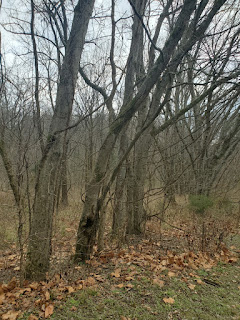The Best Bark
Shared by Heather Gallagher
New Year's Eve, 2020
Photos by Deb Beazley, Nature Center Archives
I have the best view out of my office window. A perfect row of hackberry trees lines the edge of the forest that backs up to the pond.
Right outside my window!
One of my favorites seems to have limbs stretching out toward the Park.
How do I know these are hackberries, you ask? Some things are just dead-giveaways:
- Hackberries are one of the most common trees in Nashville. Some people say we are the "hackberry capital of the world."
- Hackberry trees often grow along old fence rows. Birds resting on the fence would've dropped the seeds years ago.
But that bark! That smooth bark covered in bumps and knots!
Other trees have bark that makes identification easy, too.
Take the shagbark hickory, for example.
I've observed shaggy plates over 3 feet long! And they provide valuable habitat to animals such as salamanders and bats. I once lifted up bark from a hickory, and nuts fell out!
Persimmon trees provide valuable fruit to animals in November.
I bet you can recognize that fruit, but what about other times during the year? Look for the dark platy "alligator skin" bark that distinguishes a persimmon.
The signature tree of Warner Parks is the American Beech.
Like the hackberry, it sports very, very smooth bark--but no bumps. Known as "nature's hotel," beeches can be totally hollow inside, yet still be alive, providing shelter for owls up high or vultures down low.
Some of my favorite beeches live in the Hill Forest State Natural Area. They have amazing buttresses to help them stand tall on rocky soil.
To help you remember these trees, run your hand over the bark and say the name of the tree aloud: persimmon, beech, hackberry, hickory. You won't forget.
Also--
- Hike the Old Roadway Tree Trail in Edwin Warner Park, beginning at the Highway 100 entrance. Trees are labeled with just enough information.
- Check out the current Warner Park Tree Inventory.
- Watch our recent webinar "Trees of Warner Parks."













No comments:
Post a Comment